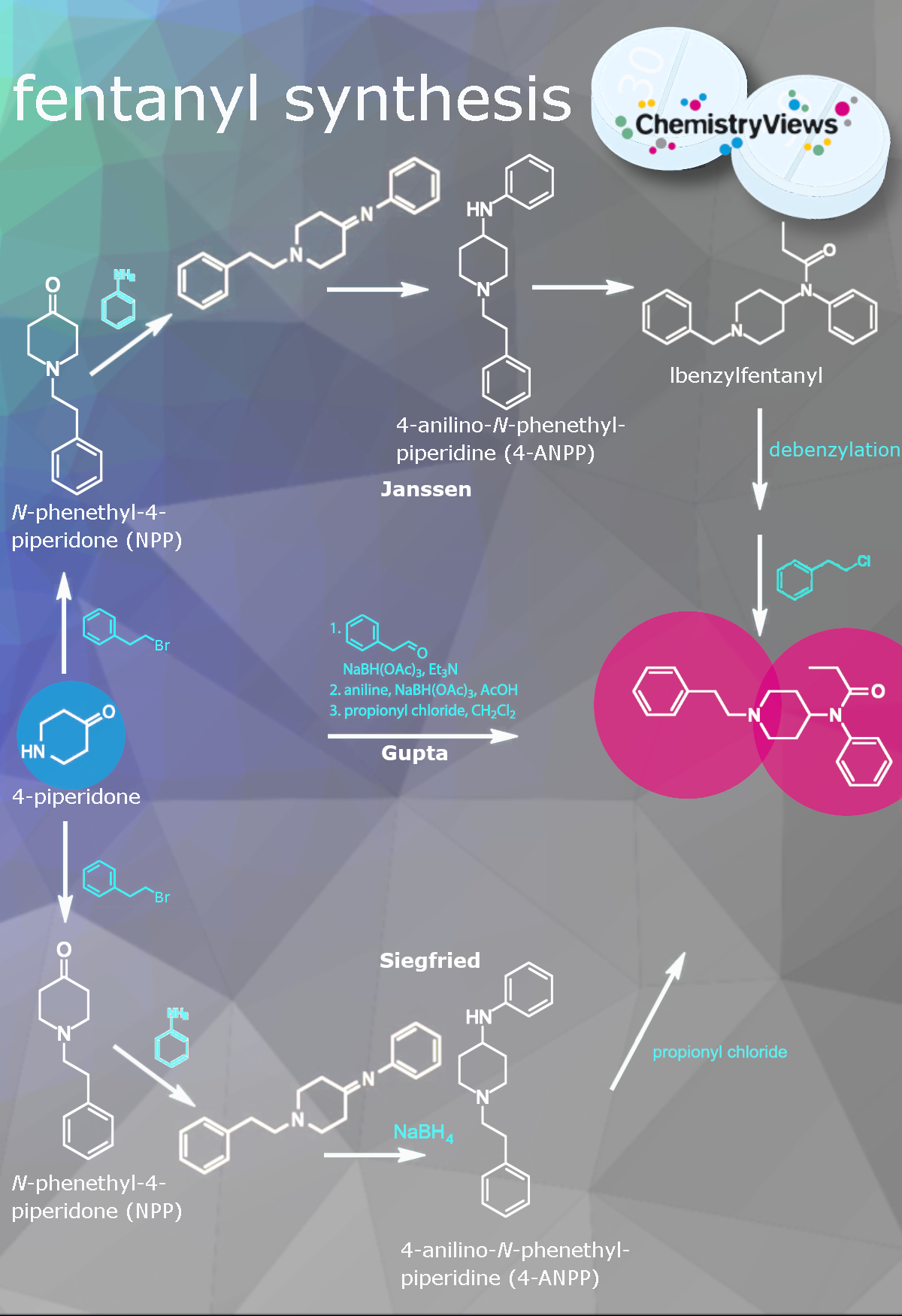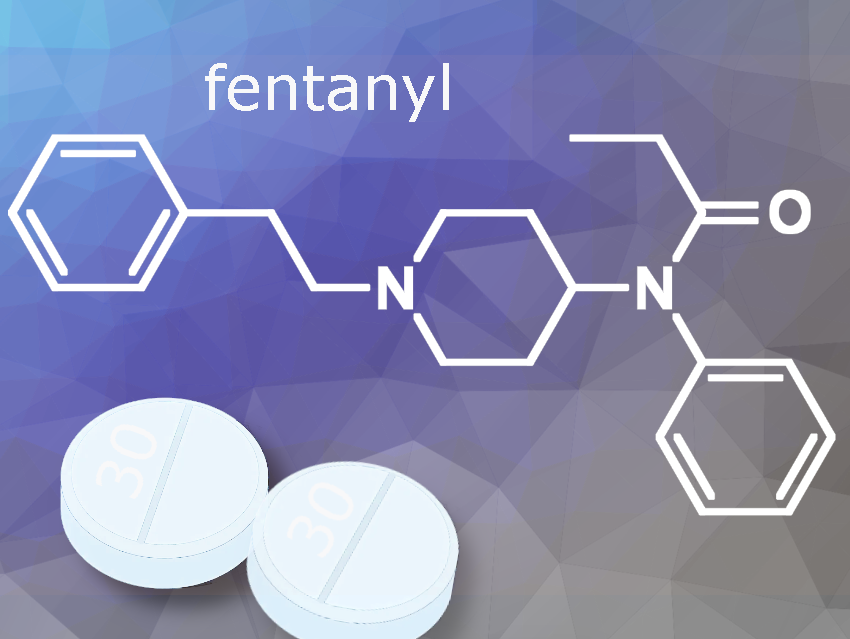Fentanyl, N-(1-phenethyl-4-piperidyl)propionanilide, a white to nearly white, polymorphic powder, is a synthetic opioid that is about 100 times stronger than morphine and about 50 times stronger than heroin as a pain reliever. It is used as a painkiller, particularly in cancer treatment, usually when weaker drugs no longer work. When properly prescribed and monitored by medical staff, it is an effective medication.
Like other painkillers, fentanyl is commonly abused as a drug, and illegally made fentanyl continues to spread. It can be snorted, injected, smoked, or swallowed. The effects start within ten minutes and can last for several hours. Fentanyl slows down heart rate, breathing, blood pressure, and digestion, sometimes causing euphoria. It also affects the muscles; long-term use can cause muscle stiffness and dysfunction, leading to an unsteady walk and jerky movements. This has led some to call it a “zombie drug”.
1 The Cheapest and Deadliest Drug
Depending on a person’s body weight, tolerance, and prior drug use, a lethal dose of fentanyl is just about 2 mg—about the size of a pencil tip. In comparison, lethal doses of heroin are generally much higher. Fentanyl suppresses the breathing reflex. Because fentanyl quickly reaches the brain, it can rapidly block the brainstem’s respiratory center, making respiratory depression the leading cause of fentanyl-related deaths.
Because fentanyl is relatively easy and inexpensive to produce, it is increasingly mixed into other drugs, such as heroine. Due to its extremely low lethal dose, the risk of accidental overdose is high. The U.S. Centers for Disease Control and Prevention (CDC) estimates that a significant share of overdose deaths among cocaine, heroin, and amphetamine users are caused by unknowingly consuming fentanyl-laced substances. Currently, fentanyl is responsible for the majority of all drug overdose deaths in the United States.
There are low-cost paper strips available that can detect fentanyl in all kinds and forms of substances. In Germany, some supervised drug consumption rooms offer these rapid tests, allowing users to check if their heroin is laced with fentanyl before injecting it. This also helps monitor its spread. Unlike in the U.S., fentanyl abuse in Germany is more often linked to drug users stealing fentanyl patches from medical facilities.
 In the event of a fentanyl overdose, the opioid antagonist naloxone (N-Allylnoroxymorphone; 17-Allyl-4,5α-epoxy-3,14-dihydroxymorphinan-6-one; pictured on the right) can be life-saving. The name naloxone is derived from N-allyl and oxymorphone. It blocks opioid receptors. However, because fentanyl is so potent, multiple doses of naloxone are often needed to combat an overdose. Naloxone is available as a nasal spray (called NARCAN®) or injection.
In the event of a fentanyl overdose, the opioid antagonist naloxone (N-Allylnoroxymorphone; 17-Allyl-4,5α-epoxy-3,14-dihydroxymorphinan-6-one; pictured on the right) can be life-saving. The name naloxone is derived from N-allyl and oxymorphone. It blocks opioid receptors. However, because fentanyl is so potent, multiple doses of naloxone are often needed to combat an overdose. Naloxone is available as a nasal spray (called NARCAN®) or injection.
In addition, fentanyl causes addiction very quickly, both physically and psychologically. Also, while heroin produces a strong high, fentanyl primarily numbs, making everything feel unimportant.
The musician Prince, among other celebrities, is believed to have died in 2016 from an accidental fentanyl overdose.
2 History
The synthetic opioid fentanyl belongs to the phenylpiperidine family. It includes sufentanil, alfentanil, remifentanil, and carfentanil. The fentanyl analog carfentanil, which has an additional carboxylic acid group attached to the 4 position, is, for example, 20–30 times as potent as fentanyl and is common in the illicit drug chain. The drug is commonly used to tranquilize elephants and other large animals.
2.1 First Synthesis of Fentanyl
Fentanyl was first synthesized in the 1960s by the Belgian chemist Paul Janssen (1926–2003), building on earlier research from the 1930s by chemists at the German Hoechst company that led to the development of the fully synthetic opioid analgesics pethidine and methadone. Janssen, who founded Janssen Pharmaceutica in 1953, was inspired by these two drugs, which had become internationally available, and finally synthesized fentanyl in 1960, which was the most potent opioid analgesic at the time.
Starting in 1963, his company marketed fentanyl as an injectable pain reliever in several Western European countries. After the patent expired in 1981, generic versions became available, and over time, fentanyl became one of the most widely used opioid analgesics worldwide. Modifications to its molecular structure later led to the development of several analogs, including sufentanil (introduced in 1984), alfentanil (1986), and remifentanil (1996). Additionally, new delivery methods, such as patches and tablets, were introduced.
2.2 From Painkiller to Illegal Drug
In the 1990s, Purdue Pharma, Stamford, CT, USA, introduced OxyContin as a painkiller in the U.S. It was heavily marketed on American television, with its addiction potential significantly downplayed. For a long time, it remained the most prescribed opioid in the country.
When it became clear that too many people were becoming addicted, prescription practices changed, and fewer opioids were prescribed. Those already addicted had to turn to other opioids, which at the time was primarily heroin.
The fentanyl sold illegally on the streets in the U.S. primarily comes from drug cartels in Mexico. The profit margins are high because the raw materials are cheap and readily available.
3 Synthesis
Fentanyl is easy and inexpensive to synthesize. It can be synthesized through several methods, including the original Janssen synthesis (patented by Paul Janssen in 1964) and later modifications such as the Siegfried, Gupta, and Suh methods. While the Janssen method is considered quite cumbersome today, the one-pot Gupta method offers yields of up to 81% and is easy to perform, making it ideal for low-cost mass production.

Sources
[1] Billig und tödlich: Fentanyl-Krise in den USA, 11KM: der tagesschau-Podcast 14.11.2023. (accessed February 4, 2024)
[2] Fentanyl, Gelbe Liste (accessed February 6, 2025)
[3] Theodore H. Stanley, The Fentanyl Story, The Journal of Pain 2014, 15(12), 1215–1226.
[4] R. S. Vardanyan, V. J. Hruby, Analgesis in Synthesis of Essential Drugs, Elsevier, Amsterdam, The Netherlands, 2006, 19–55. https://doi.org/10.1016/B978-044452166-8/50003-0
[5] Young-Ger Suh, Kyung-Ho Cho, Dong-Yoon Shin, Total synthesis of fentanyl, Arch. Pharm. Res. 1998, 21, 70–72. https://doi.org/10.1007/BF03216756
Also of Interest

Collection: Drugs from a Chemical Perspective
A growing collection of articles looking at substances like nicotine, LSD, and marijuana from a chemical perspective, exploring how they are used and why






Hello,
My comment,
1.- Who is responsible for the opioid pandemic in the United States?
for example:
Pharmaceutical Companies:
Companies like Purdue Pharma, the maker of OxyContin, have been heavily criticized for aggressive marketing practices that downplayed the risks of addiction and overstated the benefits of opioids for chronic pain management.
Lawsuits have accused these companies of misleading doctors and patients about the safety of prescription opioids.
Healthcare Providers:
Some doctors and healthcare providers overprescribed opioids, often influenced by pharmaceutical marketing or inadequate training on pain management and addiction risks.
Regulatory Agencies:
Agencies like the FDA (Food and Drug Administration) have faced criticism for approving certain opioids without sufficient scrutiny of their addictive potential.
The DEA (Drug Enforcement Administration) has also been scrutinized for not effectively monitoring and controlling the distribution of opioids.
Distributors and Pharmacies:
Companies responsible for distributing opioids, such as McKesson, Cardinal Health, and AmerisourceBergen, have been accused of failing to report or stop suspiciously large orders of opioids, contributing to their widespread availability.
Government and Policy Makers:
Inadequate regulation and oversight at both state and federal levels allowed the crisis to escalate. Some policies failed to address the root causes of overprescription and addiction.
Patients and Communities:
While not “responsible” in the same sense, the widespread demand for pain relief and the social and economic factors contributing to addiction (such as poverty and lack of access to healthcare) also played a role in the crisis.
Fentanyl today, yesterday: cocaine, heroine, metas, mariguana, tomorrow: ….??
Is not Mexico, Canada and China
kind regards
Domingo